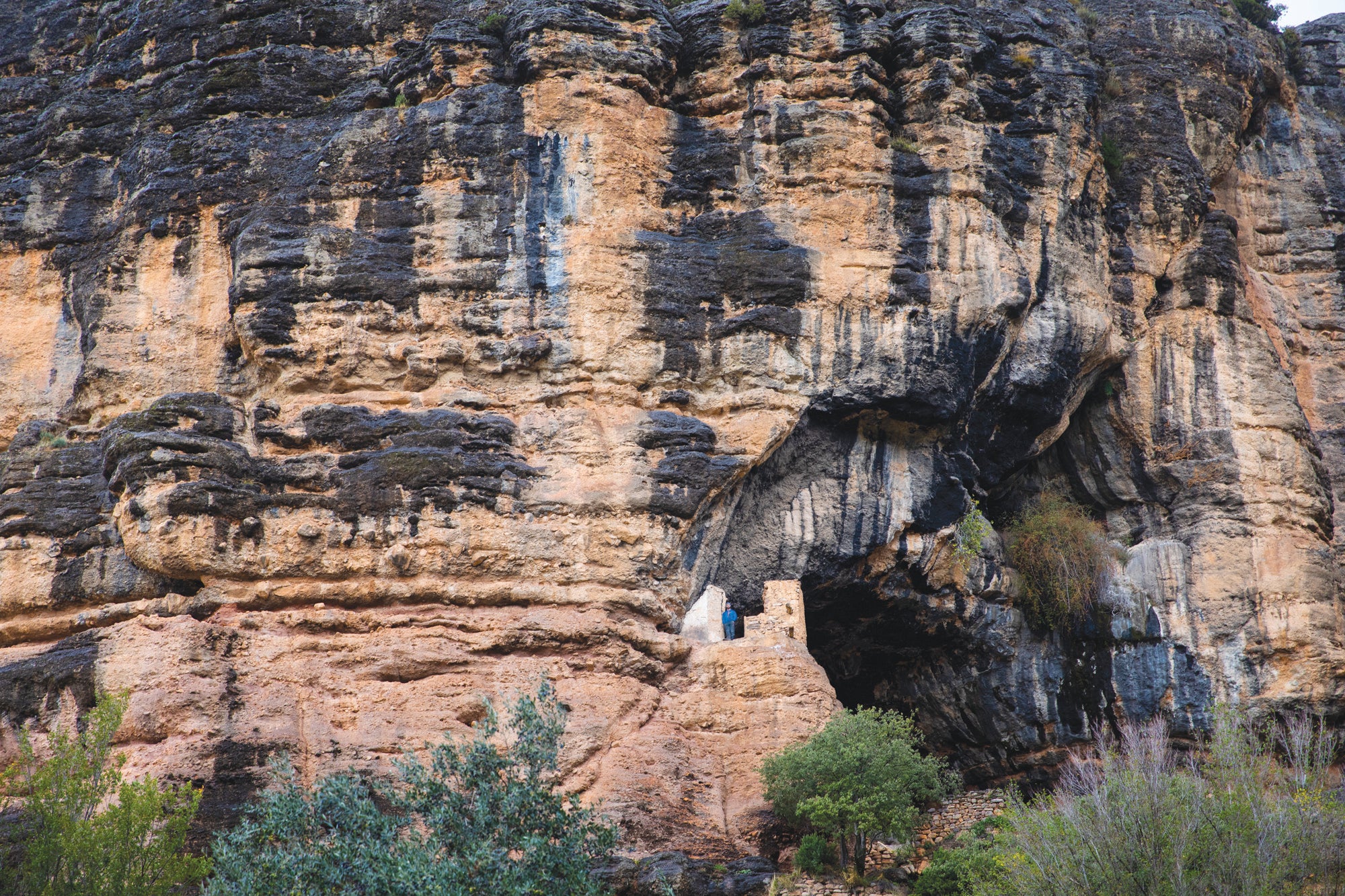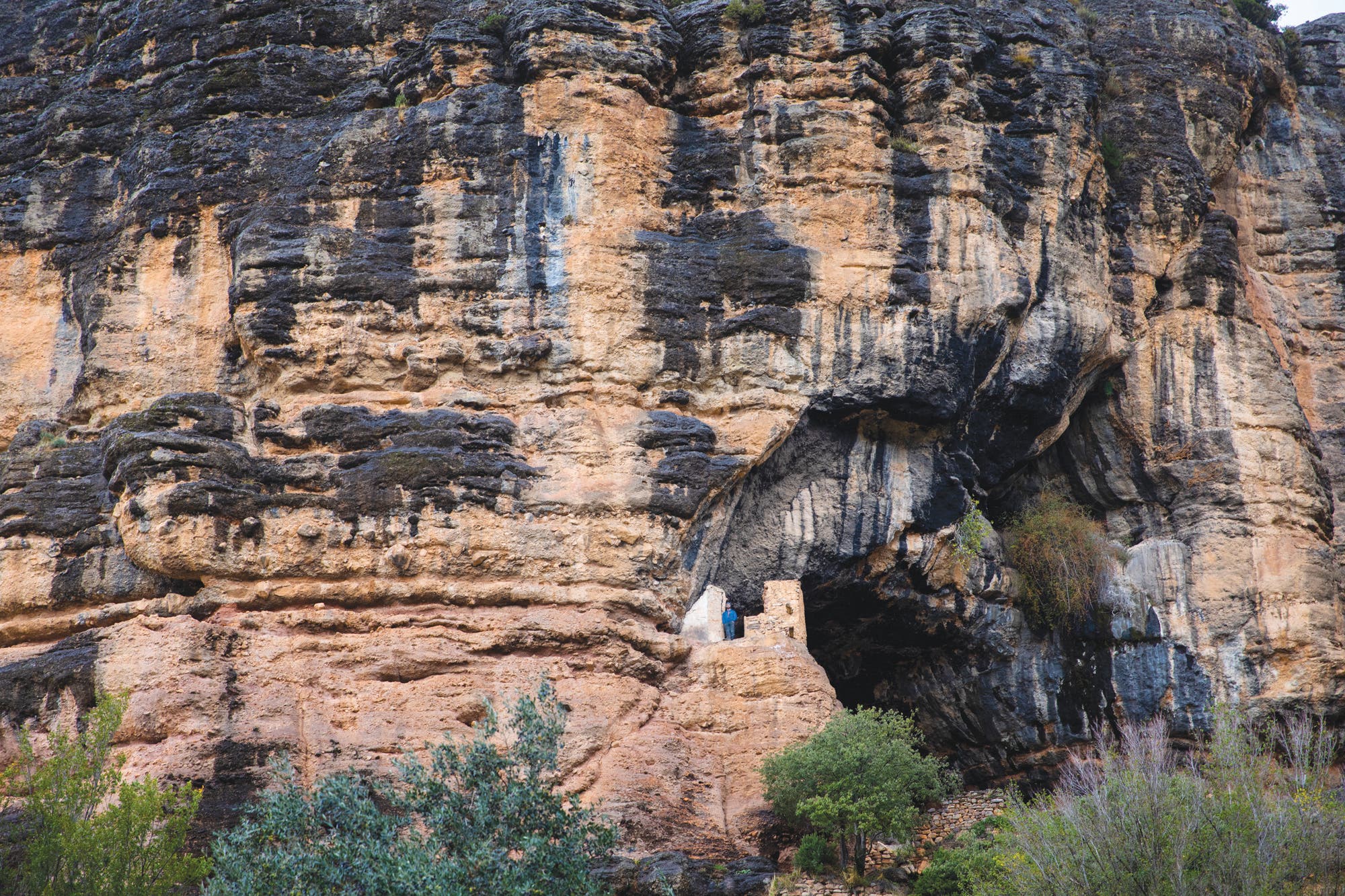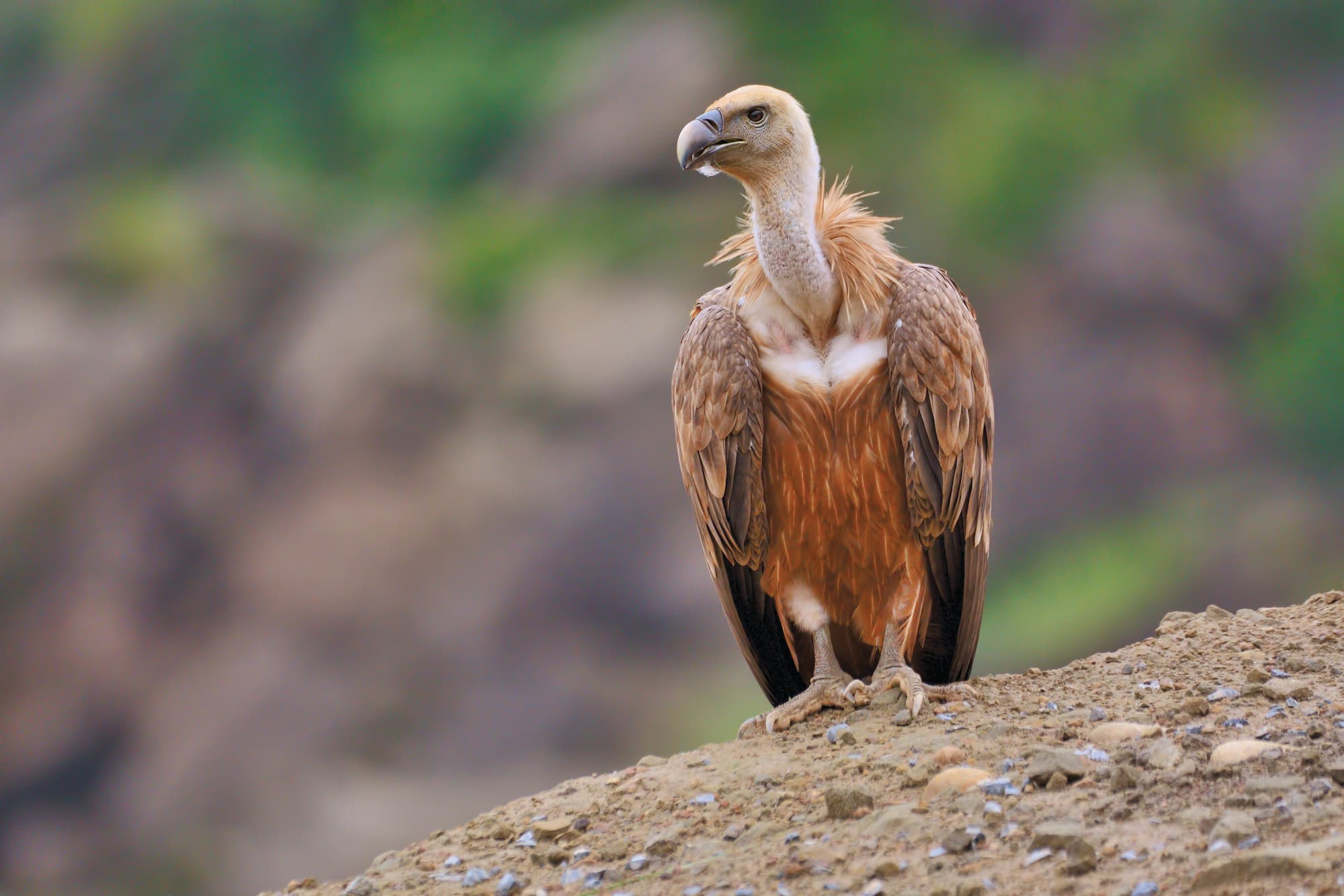Catalonia's Caves Are a Window Into the Past

'Louisa Albanese'

Time doesn’t wait.
It doesn’t matter that my boots are still wet from yesterday’s march into twilight, or that the hut keeper just piled another log into the hearth. We’ve got a date with the past, which in Catalonia is never far from the surface.
And so we pour out of the fieldstone refuge as the rain pours down. We dodge puddles on country roads, then switch to a steep, old trade route into the bush. Rock walls rise up alongside the trail and water pools at their bases. The rain lets up as we reach Solduga, a cave dwelling that dates back to the 6th century.
Our guide leads the way up some greasy stone to a ledge on a dun-colored cliff. We come around the corner and find ourselves in what’s left of a church. The roof is mostly gone and the walls are iffy, but the orientation is true. In these types of churches, the shotgun-style layout always points east-west with the altar on the sunrise side.
Returning to the ground, we see new features in the cliff face—cracks that lead to openings with sooty walls. A few families lived here, tucked into the walls above terraced fields and the Collegats Canyon, where cliffs top rolling forested hills and vultures ride thermals above.
We descend as our guide points to a darkened mouth high above us on another cliff wall: L’Espluga de Cuberes. You barely see the place before you’re inside it. The back of the cavern cuts deeply into the rock, a stream trickles from the ceiling, and tiny plantlife chases the water downhill. This was an 11th century village.
The walls have partially fallen, allowing us to see from room to room. Here is where the owners lived. There are the servant’s quarters. Over there is where the large livestock took shelter. And around the corner, another church.
This one, oriented true as the last, is rough as the other, too. But the structure seems pasted to the rock walls—outside the window, the ground drops away hundreds of feet. Inside, the security feels durable.
As dusk envelops us, I try to image how the sounds of life and livestock might have filled the space. I picture it echoing out into the cloud-whisked canyon, lost in all that air. But mostly, I marvel that I can stand here at all, in a cave that opens into more than the rock. It tells the story of a time when the best home was the biggest, highest, and most hidden cave around. And how today, the link between that time and ours is a hiking path.
Guide Says

“Look up at the cliffs,” our guide Jordy says, directing our attention to a series of shallow caves near the rim. “That’s where the vultures live.” The majestic, airborne recyclers are beloved in Catalonia. He points out a griffon vulture as the birds take tentative sorties into the rain. You can pay a man to throw a carcass in a cave with a viewing platform so you can watch vultures pick it apart. “Yes. There’s an order,” Jordy tells us. This vulture is good with skin, that one with bone. If everything works in the proper sequence, not a speck remains.